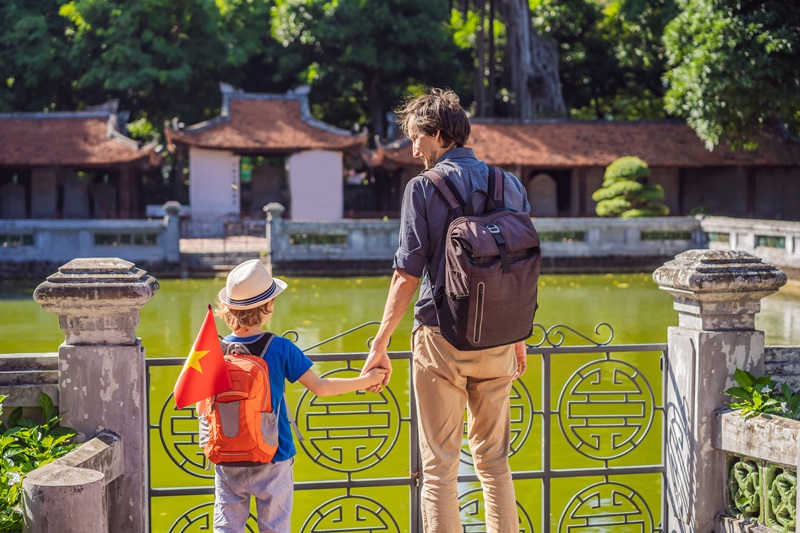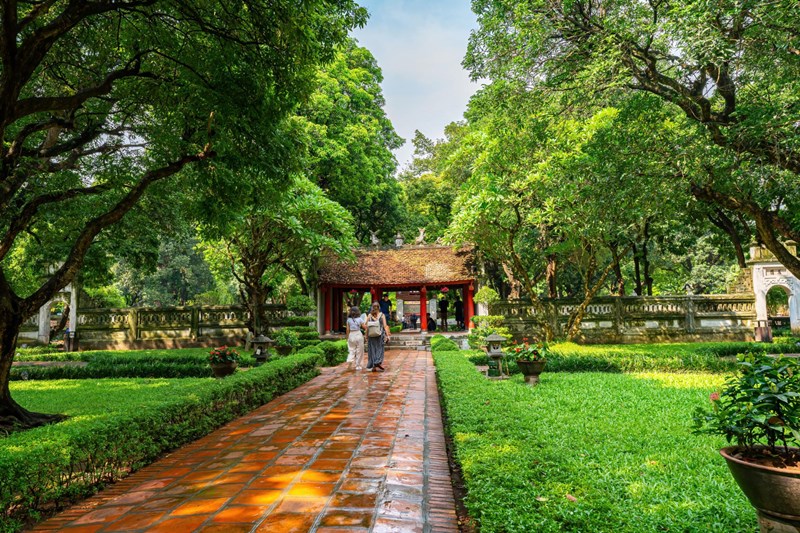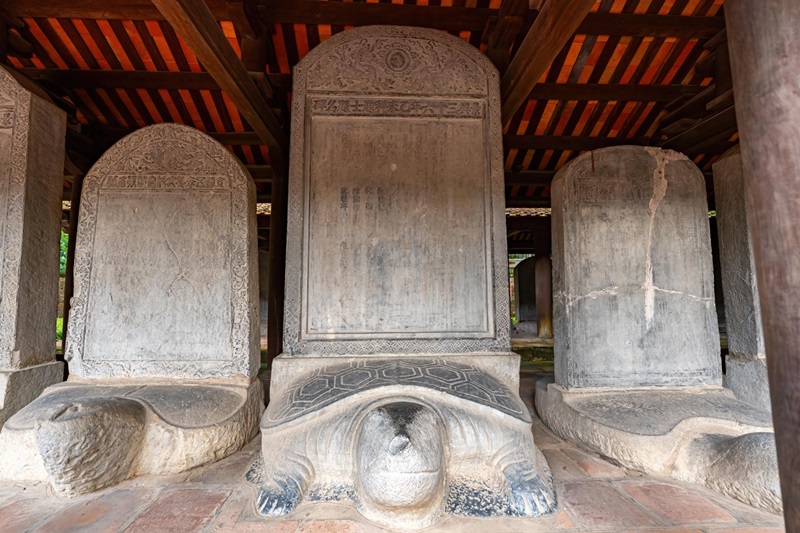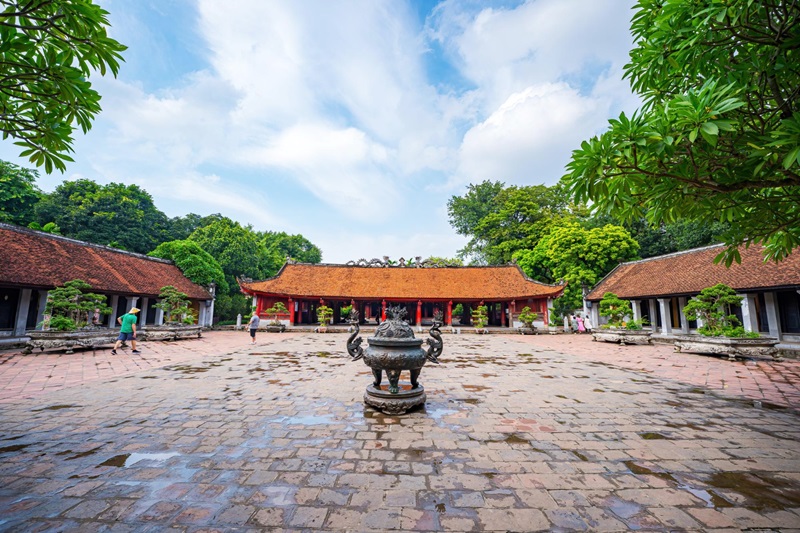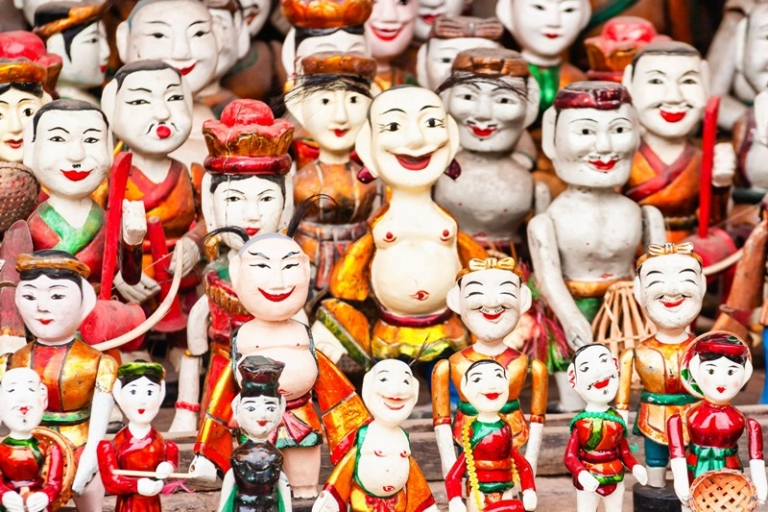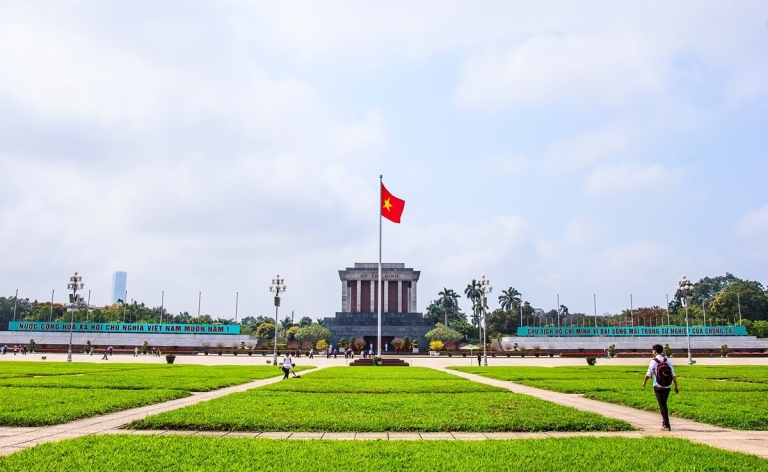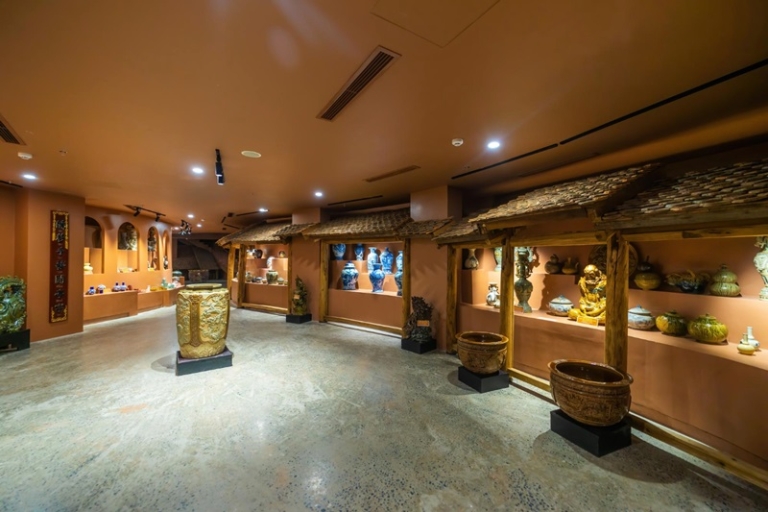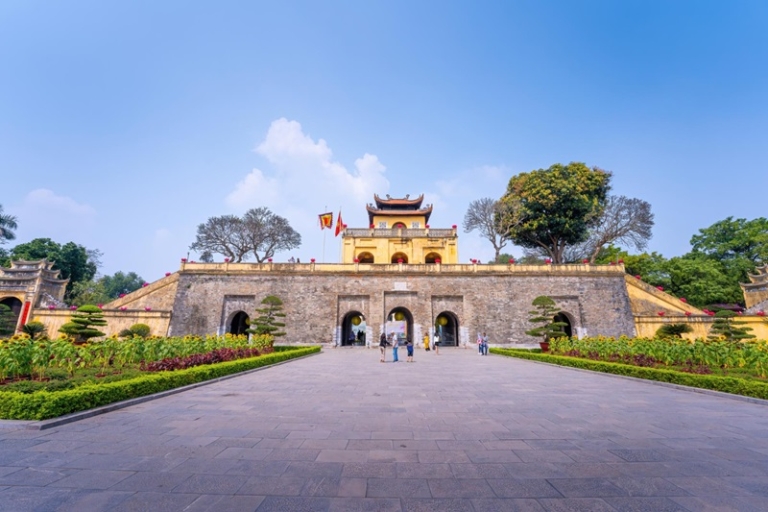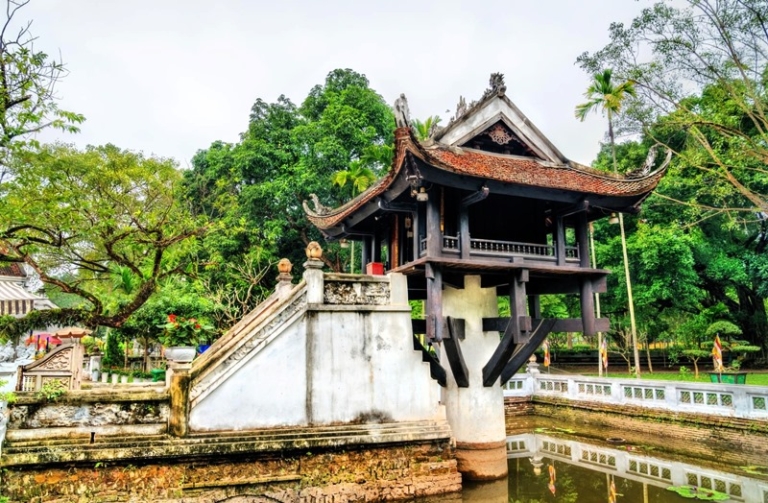Hanoi Temple of Literature, which is called Văn Miếu Quốc Tử Giám in Vietnamese, is a unique relic and the first university in Vietnam, which encourages a good attitude toward learning for most Vietnamese people.
The temple has high values of history and culture, where plenty of students come to pray for good luck before important examinations.
Location:
The Temple of Literature is located in Dong Da District, Hanoi, in the connection of the four main streets, including Nguyen Thai Hoc, Ton Duc Thang, Van Mieu, and Quoc Tu Giam.
The main gate address is 58 Quoc Tu Giam Street, Dong Da District, Hanoi, Vietnam.
If traveling from Sword Lake, you can travel along Le Thai To Street, turn right to Trang Thi Street, enter Cua Nam and Nguyen Khuyen Streets, and then turn left to Van Mieu Street.
Please pay attention to avoid breaking traffic rules when using cars or motorbikes, because there are many one-way streets in Hanoi, especially around this area!
Entrance fee and opening time:
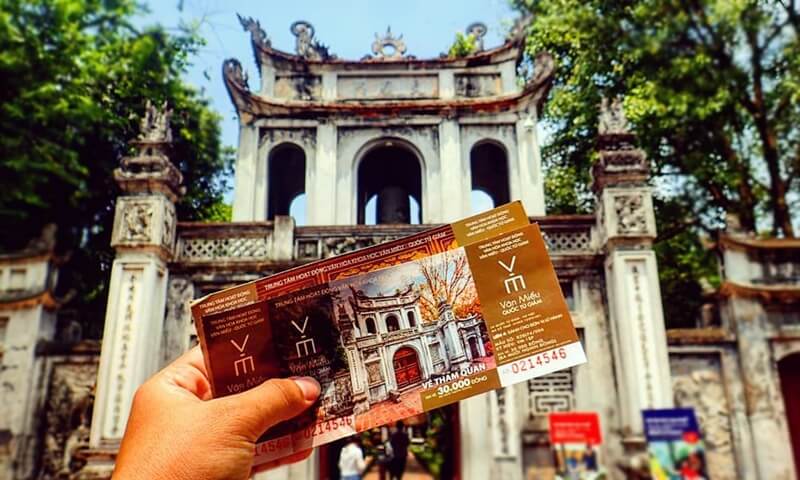
You have to pay for entrance tickets to visit Van Mieu Quoc Tu Giam.
- Adults: 30,000 VND/adult
- Students: 15,000 VND/student (showing student ID when buying and checking a ticket).
- Over 60-year-old people: 15,000 VND/person(showing the ID/ Passport)
- Free of charge for children under 15 years old.
Opening time to visit this attraction:
- The Temple of Literature opens every day from 7:30 am to 5:30 pm in the summer.
- In the winter, the Temple of Literature (Quoc Tu Giam) opens every day from 8:00 am to 5:30 pm.
A basic history of the Temple of Literature:
The Temple of Literature was established in 1070 under King Ly Thanh Tong. This site was a place of worship for Khong Tu, Chu Cong, and Tu Phoi, who had good knowledge and became the spirit of education.
In 1076, King Ly Nhan Tong built a school called Quoc Tu Giam. This building was considered as the first university in Vietnam. This school used to be where the children of Kings and noble families studied.
By the time of King Tran Thai Tong, Quoc Tu Giam was renamed the National Academy. Then, the children of civilians with excellent academic ability could also learn at this famous school.
From 1484 to 1780, the system of doctor steles had been built to write down the names and other information of 1,300 doctors of 82 examinations from 1442 to 1779.
Under the Nguyen Dynasty (1802 -1945), Quoc Tu Giam was built in Hue City. The Temple of Literature in Hanoi was changed to “Van Mieu” for worshipping, so it was called the Hanoi Temple of Literature.
The way to visit the Temple of Literature in Hanoi
All the complex of Van Mieu Quoc Tu Giam relics is situated in an area of 54,330 m2 with many architectural works.
The red brick wall surrounds this campus. With many times of restorations, this site has over 22 small and big buildings on a line.
The style of this site is based on classic architecture, using bricks, wood, and clay tiles. So, when coming to this place, you feel that you are walking in the ancient spirit of education in Hanoi, Vietnam.
When you visit this attraction, here are some buildings which you should notice because they are the main constructions here.
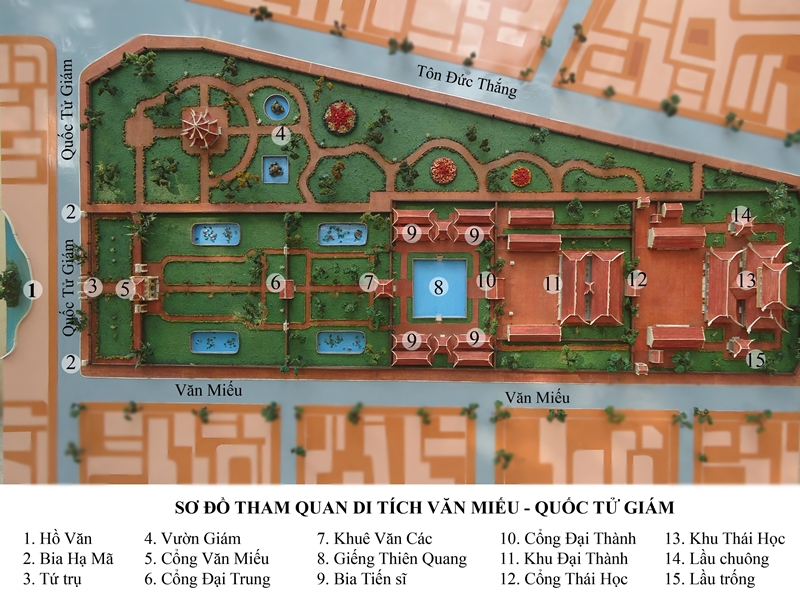
- The main gate (number 5) of the Temple of Literature has 3 doors, which have the old design same as most temples in Vietnam.
- Khue Van Cac (Literature Pavilion) (number 7) was built in 1805. This building has become a symbol of the studious spirit in Hanoi and the whole country, showing the vision of education as the core of development.
- Bia Tien Si (Stelae of Doctors) (number 9): Each stele on each turtle is made of stone, engraved with the names of the doctors, mandarins, and high-level candidates. There are still 82 steles from the examinations from 1442 to 1779, which are the most precious relics of the monument. Many students come here to try to touch the head of the turtle to get good luck; however, this action is illegal to protect the typical relics of Hanoi and Vietnam.
- Thai Hoc Buildings (number 13): These are two buildings connecting with each other. These places are to worship the kings Ly Thanh Tong, Ly Nhan Tong, Le Thanh Tong, and the famous person Chu Van An (1292–1370 ) – a teacher and high-ranking Mandarin during the Tran dynasty in Vietnam.
Notes when visiting Quoc Tu Giam
- Buy an entrance fee before visiting this site.
- Respect monuments and obey the regulations of the management.
- Do not damage artifacts and landscapes.
- Do not rub the turtle’s head, write, draw, stand, or sit on the stele.
- Costumes should be elegant and tidy when coming to the Temple of Literature. Do not wear skirts or pants that are too short (over the knees).
- Do not smoke or wear a hat in the worshipping area and the gallery.
- No acts of lack of public culture, profanity, and disorder.
- Having a proper attitude when performing the ceremony, each person burns only one incense stick and puts incense in the right place.
- It is strictly forbidden to abuse the freedom of belief to perform superstitious activities, gambling, or fraud.
- Keep hygiene and protection of environmental landscapes: Do not climb walls, climb trees, break branches, pick flowers, step on lawns, fish, swim, or throw rubbish indiscriminately. All of these are not allowed.
- Do not bring weapons, explosives, or flammable substances into the relic.
- Keep your vehicle in the right place, and manage your belongings to avoid loss.
- Filming activities at the Temple of Literature are only made with the consent of this site’s leader.
Going through the long history of Vietnam and big changes in life, the Temple of Literature in Hanoi still has an essential role in the spiritual life of the Vietnamese.
